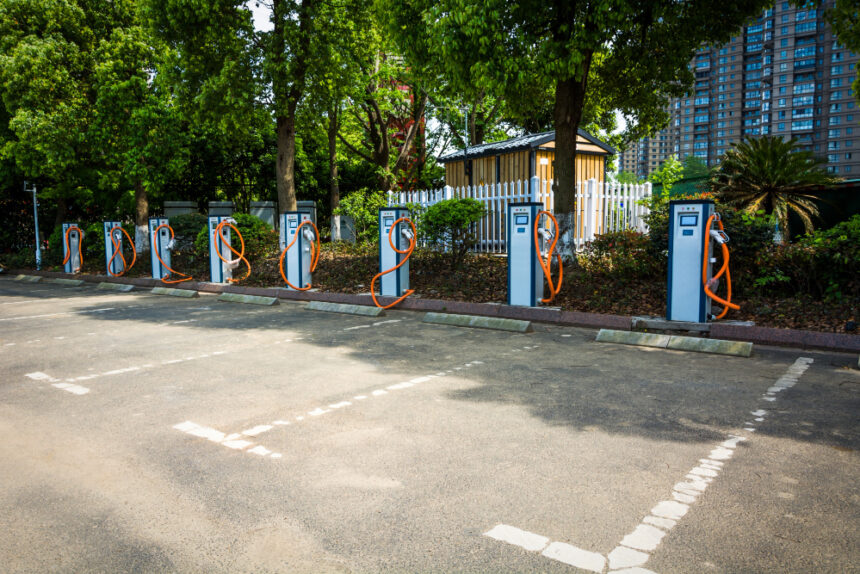As the world continues to shift toward sustainable transportation, one key element driving this change is the expansion of electric vehicle (EV) infrastructure. Among the most crucial parts of this infrastructure are electric vehicle charging stations. Investments in these stations offer tremendous opportunities not only for reducing carbon emissions but also for creating public benefits. Whether you’re an investor, policymaker, or an EV enthusiast, understanding how to leverage these investments can help maximize both environmental and economic gains.
In this article, we explore how investments in electric vehicle charging stations contribute to the wider adoption of EVs, how they benefit local communities, and why they represent a profitable opportunity for forward-thinking investors.
The Growing Need for Electric Vehicle Charging Stations
The rise of electric vehicles represents a revolutionary shift in how we think about transportation. As concerns about climate change and environmental sustainability grow, more consumers and businesses are turning to electric vehicles to reduce their carbon footprint. However, one of the biggest hurdles to mass adoption is the availability and accessibility of EV charging stations.
Without a robust network of charging stations, EV owners may face long waits or inconvenient travel distances to charge their vehicles. This can deter potential buyers and make existing owners question the reliability of their electric cars. Therefore, expanding the infrastructure for EV charging stations is not just a technological necessity; it’s a societal imperative.
Economic Opportunities from EV Charging Stations
Investing in electric vehicle charging stations can bring about significant economic benefits. The establishment of these stations requires a substantial initial investment, but the long-term rewards far outweigh the costs. Here are some of the key economic opportunities:
Job Creation: The installation, maintenance, and operation of EV charging stations create jobs in various sectors, including construction, engineering, logistics, and customer service. This employment boost can benefit local economies, especially in regions that may be struggling with high unemployment rates.
Increased Local Business Revenue: Charging stations located near popular destinations, such as shopping centers, restaurants, and entertainment venues, can drive foot traffic to these businesses. EV owners often need to wait while their cars charge, which creates a prime opportunity for them to explore nearby businesses. This can lead to higher revenue for local businesses and greater economic vitality for the surrounding area.
Real Estate Value: Areas that offer convenient access to EV charging stations tend to experience increased real estate value. Homebuyers and renters are more likely to choose properties near EV charging stations, recognizing the convenience they offer. As more cities and towns invest in EV infrastructure, properties with charging stations are becoming more desirable, driving up property values.
Attracting Investment: Local governments and businesses investing in EV charging infrastructure are not only helping the environment but are also positioning themselves to attract new businesses and investors. Areas that are recognized for their green initiatives are more likely to see increased investment from both public and private sectors, creating a cycle of economic growth and sustainable development.
Environmental Benefits of EV Charging Stations
The environmental benefits of expanding electric vehicle charging stations are among the most compelling reasons for these investments. The primary motivation for the shift from gasoline-powered vehicles to electric vehicles is the reduction in greenhouse gas emissions, which contribute significantly to climate change. By supporting the adoption of electric vehicles, charging stations play a pivotal role in reducing the carbon footprint of the transportation sector.
Reducing Greenhouse Gas Emissions: Transportation is one of the largest sources of greenhouse gas emissions globally. By making EVs more accessible and convenient, we can significantly reduce the reliance on fossil fuel-powered vehicles. With the right number of strategically placed charging stations, more people are likely to adopt electric vehicles, which directly contributes to a reduction in emissions.
Cleaner Air Quality: EVs produce zero tailpipe emissions, which means that areas with a higher number of electric vehicles and charging stations can benefit from improved air quality. Cities that implement these stations can see a reduction in smog, particulate matter, and harmful pollutants that are common in urban centers with high traffic volumes.
Support for Renewable Energy Integration: As renewable energy sources such as solar, wind, and hydropower continue to grow, there is a tremendous opportunity to power EV charging stations with clean energy. By pairing EV charging stations with renewable energy, we can create a more sustainable and energy-efficient transportation ecosystem, reducing the reliance on fossil fuels and further decreasing emissions.
Social Benefits of EV Charging Stations
Beyond the environmental and economic advantages, EV charging stations also provide significant social benefits. By ensuring the widespread availability of charging stations, we can help create a more inclusive and accessible transportation network, promoting a fairer and more sustainable society.
Access to Clean Energy for All: As the adoption of electric vehicles increases, it’s important to ensure that all members of society have access to the infrastructure they need. This includes ensuring that EV charging stations are available in underserved areas, which may not have traditionally had access to clean energy sources. By focusing on equity in the placement of charging stations, governments and businesses can ensure that the benefits of electric vehicle adoption are spread across all communities.
Health and Wellness: The shift to electric vehicles, combined with the reduction of air pollution from internal combustion engines, can have profound health benefits. Cleaner air means fewer cases of respiratory illnesses, heart disease, and other health problems that are exacerbated by pollution. By promoting the widespread availability of electric vehicle charging stations, we’re not only supporting sustainable transportation but also improving the quality of life for residents in urban and suburban areas alike.
Improving Quality of Life: For people with disabilities, elderly individuals, and others who rely on accessible transportation, EV charging stations can provide more opportunities for mobility. The design of charging stations can include considerations for accessibility, ensuring that all individuals have the ability to use the charging infrastructure. This inclusivity is a key component of building a more equitable society through transportation.
Technological Innovation and EV Charging Infrastructure
The technology behind EV charging stations continues to evolve, and this rapid pace of innovation makes these investments even more valuable. As charging technology improves, charging stations become more efficient, faster, and more convenient for users.
Fast-Charging Solutions: One of the primary challenges for EV adoption has been the time required to charge vehicles. As fast-charging technology improves, EV owners can expect to spend less time waiting to charge their vehicles, making electric vehicles more practical for long-distance travel. The widespread adoption of ultra-fast charging stations is expected to play a significant role in increasing the attractiveness of electric vehicles for everyday use.
Smart Charging: The development of smart charging systems allows for greater control over how and when EVs are charged. These systems can help optimize energy consumption, lower costs for consumers, and balance demand on the grid. By investing in smart charging infrastructure, communities can create a more resilient and efficient energy network, where charging demand is managed in a way that benefits both the grid and the consumer.
Vehicle-to-Grid (V2G) Technology: One of the most exciting developments in the field of EV charging is vehicle-to-grid (V2G) technology. This system allows EVs to not only draw power from the grid but also to feed excess energy back into the grid when it is needed most. V2G technology holds great potential for helping utilities manage peak demand and providing consumers with an additional avenue for earning income by selling energy back to the grid.
Overcoming Challenges in Expanding EV Charging Stations
While the benefits of investing in electric vehicle charging stations are clear, there are still significant challenges that need to be addressed to maximize their impact. These challenges span from technical and financial barriers to regulatory and societal issues.
High Initial Investment: Establishing a network of EV charging stations requires a significant financial investment. This includes the cost of infrastructure, site preparation, permits, and ongoing maintenance. For many businesses and municipalities, the high upfront costs can be a deterrent. However, government incentives, subsidies, and grants are often available to help offset these costs.
Grid Capacity and Energy Supply: As the number of EVs and charging stations grows, the demand for electricity will increase significantly. To meet this demand, governments and utilities will need to invest in expanding and upgrading the electrical grid. This will ensure that charging stations can be powered efficiently and reliably. Additionally, integrating renewable energy sources into the grid will help reduce the environmental impact of increased charging station demand.
Regulatory Hurdles: In many regions, regulations surrounding the installation of EV charging stations can be complex and cumbersome. Navigating zoning laws, safety standards, and utility regulations can delay or even prevent the deployment of charging stations. Policymakers must streamline these processes to make it easier for businesses and municipalities to build and maintain charging infrastructure.
Conclusion: Maximizing Public Benefits Through Strategic Investment
Electric vehicle charging stations represent a crucial component of the transition to sustainable transportation. By making smart investments in this infrastructure, we can create significant economic, environmental, and social benefits. These stations play an essential role in reducing greenhouse gas emissions, supporting local economies, improving health outcomes, and enhancing quality of life.
As the demand for electric vehicles continues to rise, so too will the need for an extensive and efficient charging network. Investors, businesses, and governments that prioritize these investments will not only contribute to a cleaner, greener future but also capitalize on the growing market for sustainable transportation. The potential for public benefits is vast, and by leveraging investments in EV charging stations, we can maximize these rewards for generations to come.

